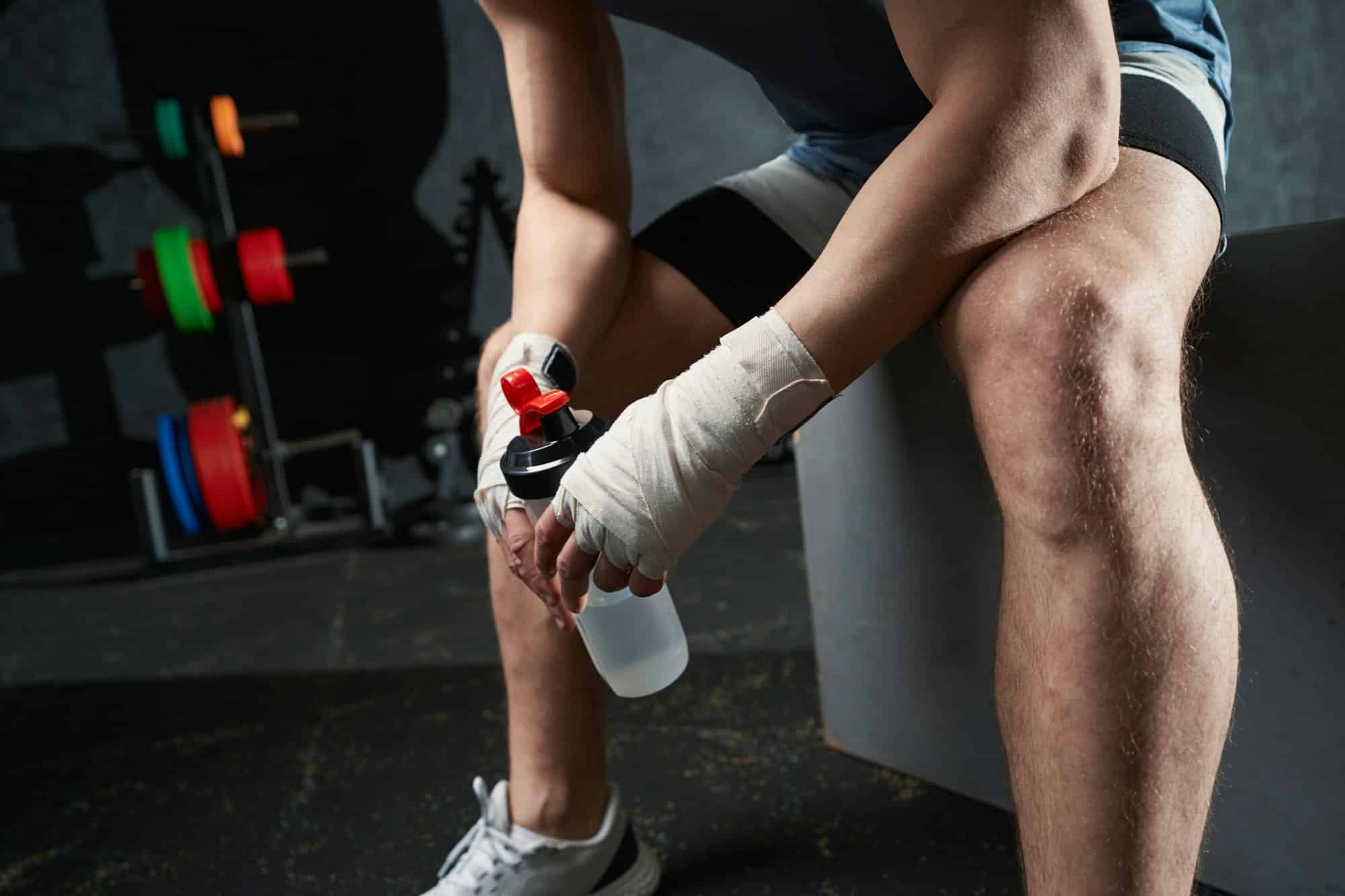Football, known as soccer in some parts of the world, is a sport that requires an exceptional blend of power, speed, and strength. While these are essential for all players, goalkeepers particularly benefit from having these traits in spades. A goalkeeper’s performance can be the deciding factor in a nail-biting match, where every fraction of a second counts. One training strategy that is gaining popularity among soccer teams is employing plyometric exercises specifically tailored towards goalkeepers. But you might be wondering: how can goalkeeper-specific plyometrics improve reaction time in football?
The Power of Plyometric Training
Let’s dive into the fundamentals of plyometric training before we start exploring its benefits for goalkeepers. Plyometrics, sometimes referred to as ‘jump training’, is a type of exercise that aims to develop muscle power and improve the speed at which it can be expressed. It involves quick, powerful movements that start with a muscle-lengthening (eccentric) action followed by a muscle-shortening (concentric) action.
This might interest you : What Are the Implications of Virtual Fans for Athlete Performance in Closed-Door Matches?
A recent study indexed on PubMed revealed that plyometric training enhances muscle recruitment and activation. This results in an increase in the force that muscles can generate and the speed at which they can do so.
Moreover, plyometrics has been recognized by Crossref scholar, an academic search engine, as a beneficial intervention for athletes who want to improve their explosive power. This is particularly relevant to goalkeepers, who frequently have to make explosive movements, such as diving to save a goal or jumping to catch a high ball.
Also to read : How Can Real-Time Biomechanical Feedback Enhance Swimming Technique?
Tailoring Plyometrics for Goalkeepers
While plyometrics has proven to be beneficial for all types of athletes, there’s a significant advantage in tailoring these exercises to suit the unique demands of a goalkeeper.
Goalkeepers have a different set of physical demands compared to their outfield counterparts. They need to possess not only the power and strength to leap, dive, and push the ball away but also the dexterity to swiftly change direction and the quickness to react in a fraction of a second.
A goalkeeper-specific plyometric routine could include exercises like lateral jumps, tuck jumps, and depth jumps. These drills mimic the explosive, multidirectional movements a goalkeeper makes during a match, thereby improving their power and agility, which ultimately boosts their reaction time.
Evaluating the Efficacy of Plyometrics for Goalkeepers
Plyometric training’s benefits for goalkeepers are not just theoretical; they have been empirically proven in multiple scientific studies. One such study published on PubMed followed a group of professional goalkeepers who underwent an 8-week goalkeeper-specific plyometric training program. At the end of the intervention, the goalkeepers had significantly improved their jump height and reaction speed.
A similar study was conducted by Crossref scholar, which confirmed these findings and added that goalkeepers who regularly engage in plyometric training also have a lower risk of injury.
Moreover, plyometric training has been found to not only improve the physical attributes of goalkeepers but also their mental toughness. The high-intensity nature of these exercises can help goalkeepers build resilience, improve their focus, and develop the mental toughness needed to stand their ground in high-pressure situations.
Implementing Plyometrics in Goalkeeper Training
While the benefits of plyometric training for goalkeepers are clear, it is crucial to implement this training method correctly to get the desired results.
Firstly, it’s important to remember that plyometrics is a high-intensity form of exercise, so it should be incorporated into a training program gradually. Starting with lower intensity exercises and gradually increasing the intensity over time can help condition the body for these exercises and reduce the risk of injury.
Secondly, proper form and technique are crucial in plyometric training. Improper technique can lead to injury and may not produce the desired results. Therefore, it is recommended to have a qualified coach supervise these sessions and provide feedback on form and technique.
Lastly, plyometric training should be complemented with other forms of training such as strength training, agility drills, and endurance workouts. This helps create a balanced training program that addresses all the physical demands of a goalkeeper.
The Future of Plyometrics in Goalkeeper Training
Given the proven benefits of plyometric training for goalkeepers, it is likely that this training method will become a standard part of goalkeeper training programs in the future.
With advancements in sports science and technology, it is also likely that we will see more sophisticated and personalized plyometric training programs. These programs would take into account factors like the goalkeeper’s physical condition, their strengths and weaknesses, and even the specific demands of the team’s style of play.
While the future is promising, it is important to remember that plyometric training is not a magic bullet. It should be seen as one piece of the puzzle, with other components like tactical understanding, technical skills, and psychological readiness playing equally important roles in a goalkeeper’s performance.
The Science Behind Goalkeeper-Specific Plyometrics
Delving deeper into the science of plyometric training, we can explore the physiological changes that occur when goalkeepers engage in these activities. As per Google Scholar, plyometric exercises are designed to harness the power of the stretch-shortening cycle (SSC) – a vital process in generating maximum force in the shortest possible time.
The SSC involves an eccentric contraction (where the muscle lengthens), followed by an immediate concentric contraction (where the muscle shortens). This process stores elastic energy in the muscle during the eccentric phase, which can then be released during the concentric phase, resulting in a powerful explosive movement. Plyometric exercises like vertical jumps and lateral jumps perfectly mimic this action, thereby directly improving the functionality of the muscles involved.
Furthermore, a study indexed on PubMed highlights the neurological benefits of plyometric training. The research explains how these exercises enhance neuromuscular efficiency – the ability of the nervous system to recruit the right muscles, at the right time, with the right amount of force. This development in coordination and reaction speed is essential for goalkeepers who need to respond quickly to unpredictable situations on the field.
These findings have been corroborated by other studies on Google Scholar and Crossref scholar. For instance, a research study led by Ramirez Campillo revealed that plyometrics not only improved the lower body strength and jump performance of young soccer players but also significantly enhanced their ability to change direction swiftly.
Conclusion: Integrating Plyometrics into a Holistic Training Approach
There’s no doubt that plyometric training has a wealth of benefits for goalkeepers. By improving muscle power, reaction time, and the ability to change direction quickly, these exercises can help goalkeepers elevate their performance on the pitch. However, it’s critical to remember that no single training method is comprehensive enough to cater to all the demands of this complex sport.
Therefore, plyometrics should be just one aspect of a holistic training program. This program should also incorporate elements of strength conditioning, endurance training, technical drills, and mental resilience exercises. Emphasis should be placed on maintaining a balance between different forms of training to ensure the goalkeeper develops evenly and remains fit.
The efficacy of such a holistic approach has been confirmed in a study conducted by Crossref scholar. The research compared the performance of two groups of male soccer players over a period of time. One group participated in a comprehensive training program that included plyometric, strength, and endurance exercises (the ‘experimental’ group), while the other group (the ‘control’ group) followed a regular training regimen without plyometrics. The experimental group showed significant improvements in strength, endurance, and reaction time post-training compared to the control group, thus highlighting the importance of diversified training.
Given the robust scientific evidence, it’s clear that goalkeeper-specific plyometric training can be a game-changer in soccer. By incorporating this innovative strategy into their training regime, goalkeepers can improve their performance, reduce their risk of injury, and maximise their potential on the field. However, balance is key, and it’s paramount that soccer players and coaches view plyometrics as one crucial component of a comprehensive, well-rounded training program.












